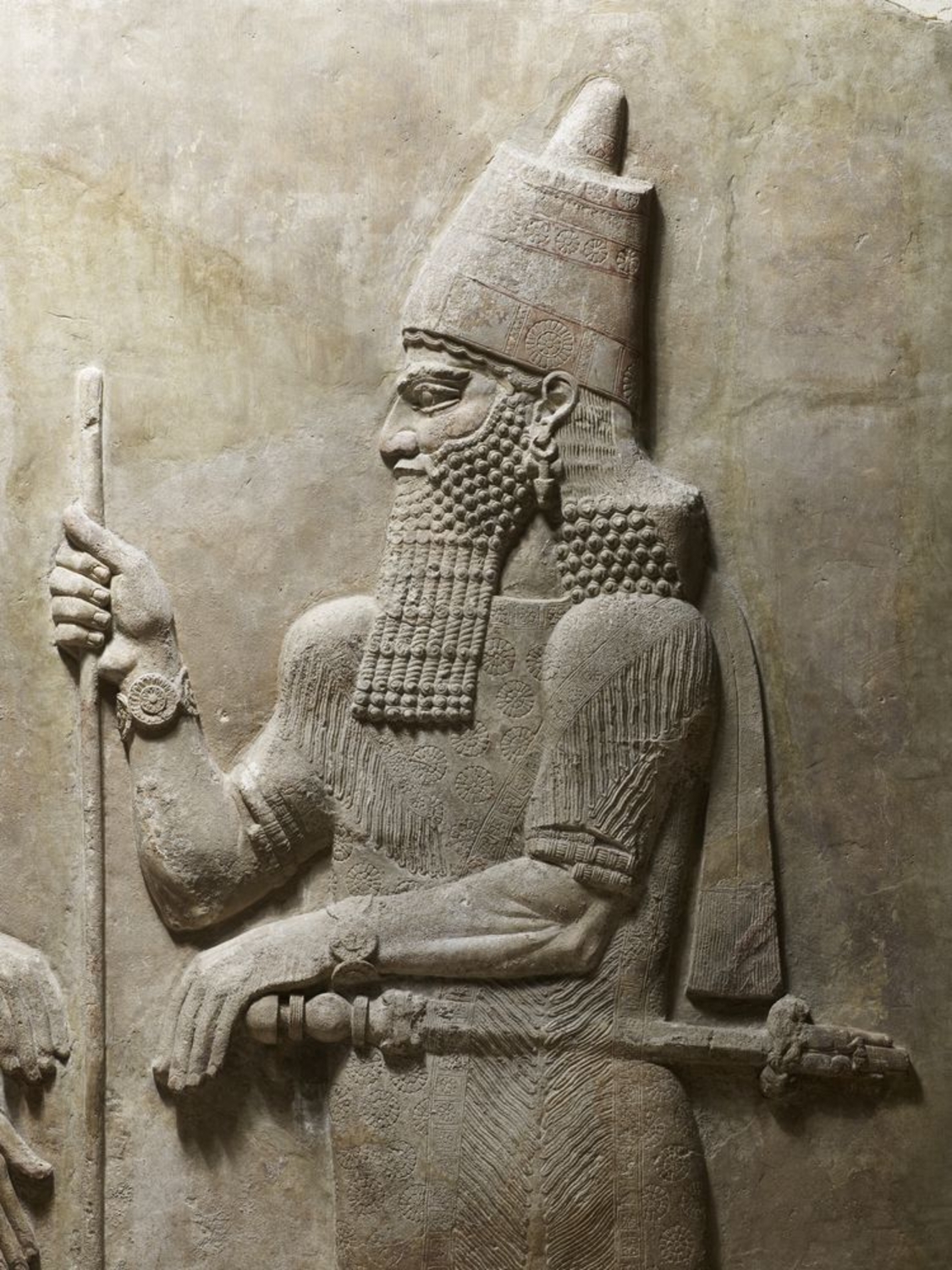
- Home
- The Eighth Campaign of Sargon II
- An Assyrian warrior king
The imperialist political organisation of the Assyrian state required a warrior king. The reign of Sargon II became increasingly belligerent and the king was constantly at war. He launched a series of campaigns to punish his enemies, crush revolts and subdue rebellions. He waged war to expand the territory of the god Ashur and acquire the resources he needed to run his empire. He also basked in the glory and prestige of his victories and the growing legitimacy of his rule. Guarantor of the prosperity of the state, he strived to win the favour of the gods and, most importantly, the support of the god Ashur.
The massive armies of Ashur
Sargon II constantly reminds us that he is at the head of themassivearmies of the god Ashur, which have been entrusted to him to crush the enemy. They are made up of three types of units: combat units, military engineers (pioneers, sappers, miners and climbers) and more specialised units (divinatory priests, specialists in conjurations and Ashur's constant support
The king enjoyed an exclusive relationship with the god Ashur. The god took the side of his army in battle, and gave both military and moral support to Sargon II. The king used prayer to appeal for help from Ashur, who responded by granting him military victories. "(l.124-b) I prayed to him [Ashur] with upraised hands, (l.125) Lord Ashur listened to my righteous words and they pleased him; he accepted my rightful request and approved my prayer." During the battle of Mount Wa'ush, Sargon II was a bloodthirsty and cruel adversary for his enemies and he pushed his actions to their limit: (l.134) I inflicted a crushing defeat on him and spread the corpses of his warriors like malt to dry and filled the mountain highlands with them. (l.135) their blood I let rush like a river down the mountain gorges and I dyed red the plains, open country and the foot of the mountain as if with berries, (l.136) the elite soldiers of his army, bowmen, lancers, I slaughtered them at his feet like sacrificial sheep and cut off their heads, (l.142) the army of Urartu, this evil enemy, with its allies, I forced them to retreat and in the middle of Wa'ush mountain they turned and ran, (l.143) their horses filled the ravines of the mountain torrents, and they, like crazed ants, spread out over the most strenuous paths. (l.144) Amid the onslaught of my mighty weapons, I climbed behind them and filled the slopes and inclines with the corpses of their fighters (l.145) Over a distance of six double hours from Mount Wa'ush to Mount Zimur, the jasper mountain, I chased them at the point of my arrows The body of the warrior king
The king of battle
Associated media
Open Media Library
